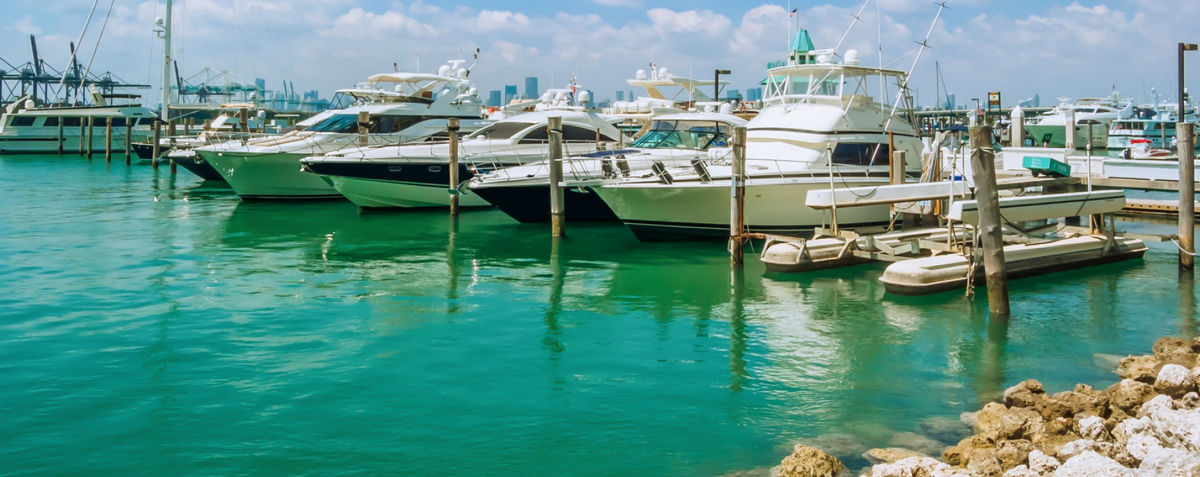What is the Clean Vessel Act?
What is Florida's role in the Clean Vessel Act?
Which crafts are required by Florida Statute 327.53 to have a working toilet on board when in state waters?
How does a pumpout station operate?
How much does it cost to use a pumpout station?
What are the coastal boundaries for waters in Florida?
What are marine sanitation devices?
How do you tell if an MSD is U.S. Coast Guard approved?
What are the guidelines for Y-valves?
What is a No Discharge Zone?
Are marine sanitation devices subject to inspection?
What are the fines for non-compliance?
The Clean Vessel Act provides funding for construction of pumpout and dump station facilities that help ensure proper disposal of human sewage from recreational boats. The Clean Vessel Act was initially authorized by Congress in 1992 to be administered by the U.S. Fish and Wildlife Service. This act provides over $10 million of additional funds each year to keep alternatives available to prevent improper disposal of recreational boater sewage.
Since 1994, the Florida Department of Environmental Protection (DEP) has administered the Clean Vessel Act grant program throughout the state. DEP has awarded more than $7 million in funds and seen an increase from 135 pumpout stations to nearly 400 stations throughout the state.
Any vessel 26 feet or longer with an enclosed cabin and berthing facilities.
Any houseboat, defined as a vessel used primarily as a residence and not moved for 21 out of 30 days in a county of this state.
Any floating structure with enclosed living space with berthing facilities or workspace with public access.
A boater will secure the boat either at a dock or a mooring field and request pumpout service from the provider. Although most pumpout systems are operated by a dock attendant, some are coin-operated systems that a boater can use without assistance. A hose and fitting are then connected from the pumpout equipment to the deck fitting on the boat. The system is turned on and either pumped directly into a local sewer system or pumped into a holding tank.
Boaters can expect to see pumpout services range from no cost up to $40. Any pumpout station constructed with Clean Vessel Act funds carries a maximum fee of $5.
Coastal boundary limits are nine nautical miles on the Gulf and three miles on the Atlantic Ocean.
A marine sanitation device (MSD) is any equipment for installation on board a vessel, other than a toilet, which is designed to receive, retain, treat or discharge sewage and any process to treat such sewage (Florida Statute 327.53).
MSD TYPE 1: Flow-through device that treats sewage by chemical or thermal means.
MSD TYPE 2: Device that treats the sewage by biological means and uses bacteria.
MSD TYPE 3: Holds the sewage. Prevents direct overboard discharge or sewage.
For Type I or Type II a label is affixed to the device or there is a letter or document on board for Type 1 or 2 MSD; Type 3 does not require a label.
Under federal law, if a boat has a Y-valve allowing direct overboard discharge of untreated waste, it must be closed while operating in all inland and coastal waters. It is suggested you use a non-releasable wire tie or lock or remove the valve handle to secure the device. When you are more than three miles offshore in the Atlantic Ocean or more than nine miles offshore in the Gulf of America, the Y-valve may be open allowing direct discharge overboard.
A Y-valve may also be found on boats having both a Type I or II MSD and a holding tank. This gives the boater an option to discharge treated waste overboard or to contain it for pumpout later.
A No Discharge Zone is approved by the U.S. Environmental Protection Agency, which prohibits boats from discharging treated or untreated sewage into water bodies. In these waters, a Y-valve must be closed. Currently, there are three No Discharge Zones in Florida: Destin Harbor, the Florida Keys Marine Sanctuary and the city of Key West.
Yes. When the owner or operator is aboard, an officer may board a vessel with consent or if there is probable cause or knowledge to believe that a violation has occurred or is occurring. An officer may also board a vessel if the operator refuses or is unable to display the safety or marine sanitation equipment.
$50 infraction for compliance issues
$250 civil penalty for discharge of raw sewage


